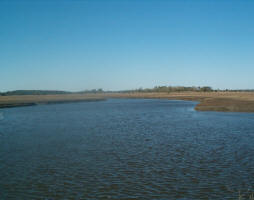 Legal and regualtory enabling environment for Water Information Systems in the Mediterranean
Legal and regualtory enabling environment for Water Information Systems in the Mediterranean
| Download |
|
|---|---|
| View | Open in browser |
| Upload date | 03 May 2018 |
| Contributor | Eric Mino |
| Keywords | MWKP, information |
| Release date | 03/05/2018 |
| # | File name | Upload date | Size | Content type |
|---|---|---|---|---|
| 1 | ENG_WIS_Legal-Report_ FINAL_VERS1_Sept17-2.pdf (current) | 03 May 2018 | 1 MB |
|
In the framework of the Mediterranean Water Knowledge Platform, a report on legal and regulatory enabling environment has been produced. It is the result of a study on legislative frameworks promoting the development of National Water Information Systems in European neighbourhood countries in the Mediterranean. The report available in English and French analyse the existing frameworks in 8 countries (Albania, Algeria, Jordan, Lebanon, Mauritania, Morocco, Tunisia and France) and provides recommendations to develop or adapt legal and regulatory texts at national levels.
Countries that want to ensure effective management of water and aquatic environments with respect for their international agreements require not just trained staff and efficient equipment: they need to set up a water information system that is devised to be exhaustive and accessible to the public.
Since this type of system is extremely technical, the first step should be to define the legal framework and the elements needed for its organization and smooth operation.
All water information systems are imperatively based on a legislative foundation whose object is to ensure its visibility and enforceability, in particular vis-à-vis those solicited to contribute to it and any administrated parties and water users likely to use its data.
Effective implementation also involves, at the same legislative level, including the obligation for data holders, as well as the designated administration, to transmit non-confidential data for the benefit of any water users who might request them.
In addition, a regulatory application system should explicitly stipulate the water information system’s content, organization and operation, and designate the frontline central administrative authority responsible for implementing it, and the terms of this implementation. It should also set out the methodology employed for the water information system concerned.
Lastly, this central-level system should have adequate relays at decentralized levels, either geographical (e.g. hydrographic basin) or administrative (e.g. a region).
 you are not logged in
you are not logged in





